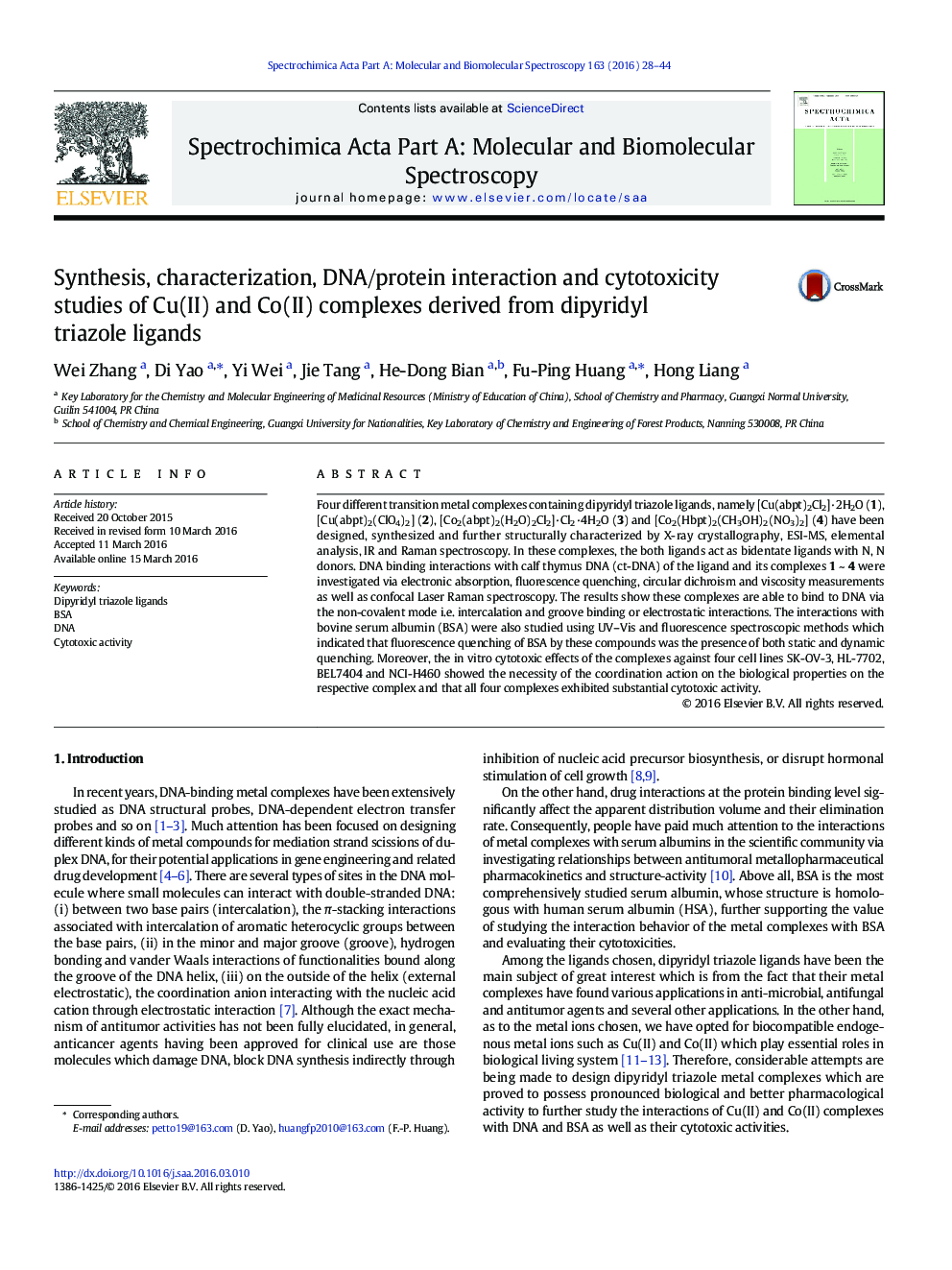| کد مقاله | کد نشریه | سال انتشار | مقاله انگلیسی | نسخه تمام متن |
|---|---|---|---|---|
| 1231356 | 1495206 | 2016 | 17 صفحه PDF | دانلود رایگان |

• Four different transition metal complexes of dipyridyl triazole ligands have been synthesized and characterized.
• The compounds can bind to DNA via the non-covalent mode i.e. intercalation and groove binding or electrostatic interactions.
• The fluorescence quenching of BSA by these compounds was the presence of both static and dynamic quenching.
• All four complexes exhibited substantial cytotoxic activity.
Four different transition metal complexes containing dipyridyl triazole ligands, namely [Cu(abpt)2Cl2]·2H2O (1), [Cu(abpt)2(ClO4)2] (2), [Co2(abpt)2(H2O)2Cl2]·Cl2·4H2O (3) and [Co2(Hbpt)2(CH3OH)2(NO3)2] (4) have been designed, synthesized and further structurally characterized by X-ray crystallography, ESI-MS, elemental analysis, IR and Raman spectroscopy. In these complexes, the both ligands act as bidentate ligands with N, N donors. DNA binding interactions with calf thymus DNA (ct-DNA) of the ligand and its complexes 1 ~ 4 were investigated via electronic absorption, fluorescence quenching, circular dichroism and viscosity measurements as well as confocal Laser Raman spectroscopy. The results show these complexes are able to bind to DNA via the non-covalent mode i.e. intercalation and groove binding or electrostatic interactions. The interactions with bovine serum albumin (BSA) were also studied using UV–Vis and fluorescence spectroscopic methods which indicated that fluorescence quenching of BSA by these compounds was the presence of both static and dynamic quenching. Moreover, the in vitro cytotoxic effects of the complexes against four cell lines SK-OV-3, HL-7702, BEL7404 and NCI-H460 showed the necessity of the coordination action on the biological properties on the respective complex and that all four complexes exhibited substantial cytotoxic activity.
Four different transition metal complexes of dipyridyl triazole ligands have been synthesized and characterized. The interactions between the compounds and DNA have been investigated by means of electronic absorption, fluorescence quenching, circular dichroism and viscosity measurements as well as confocal Laser Raman spectroscopy. The interactions with BSA were also studied via UV–Vis and fluorescence spectroscopic methods. The cytotoxic effects of the compounds against four cell lines SK-OV-3, HL-7702, BEL7404 and NCI-H460 were tested in vitro.Figure optionsDownload as PowerPoint slide
Journal: Spectrochimica Acta Part A: Molecular and Biomolecular Spectroscopy - Volume 163, 15 June 2016, Pages 28–44